Tucked away on the southern edge of Lanarkshire and the Pentland Hills is the village of Carnwath. Now within commuting distance for city workers in Edinburgh, this farming village was once a small hub of its own, with local stores serving the working population.
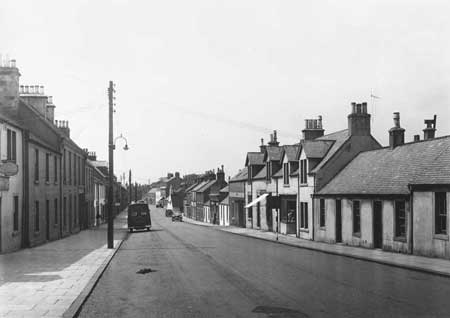
In the Fashion and Textiles collections of the National Museums Scotland we hold a group of items dating between 1890-1960, once stocked by James Main and Sons of Carnwath, ‘Ladies’ and Gents’ Outfitters and Drapers’. The collection is a valuable record of early 20th century working dress, and offers an amusing insight into the sturdy underwear of the recent past.
Two years ago Lisa Mason, Assistant Curator of Modern and Contemporary Design, and I began a voyage of discovery: alerted to the ‘Carnwath collection’ while working in the object stores with former curator Naomi Tarrant, it seemed a perfect subject for an upcoming conference Tailored Trades. Our proposed talk was accepted and we began a project to photograph all of the James Main and Sons items, allowing us to digitally reassemble the group, which had been dispersed in storage. The Fashion and Textiles collections are broadly stored by object type. We try to keep items with the same origin or provenance together, but in cases such as the James Main and Sons group, the wide variety of different garments means this is not always possible.
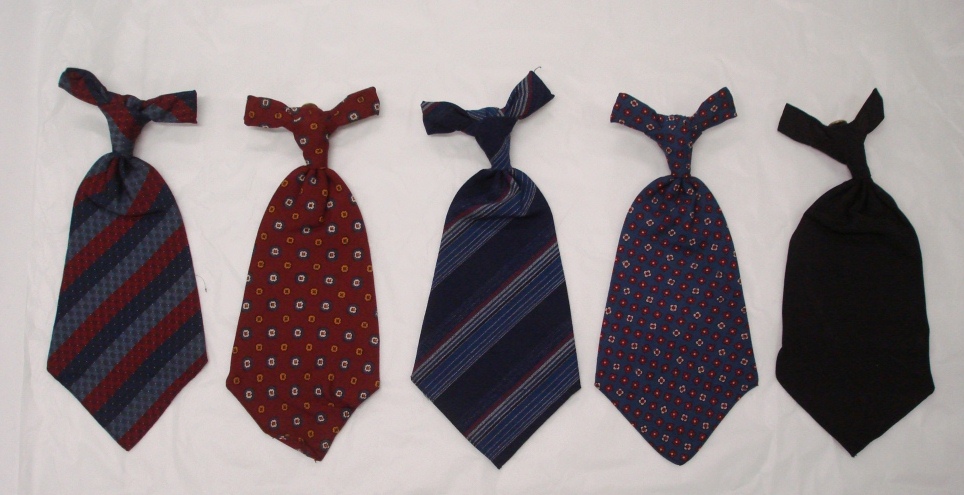
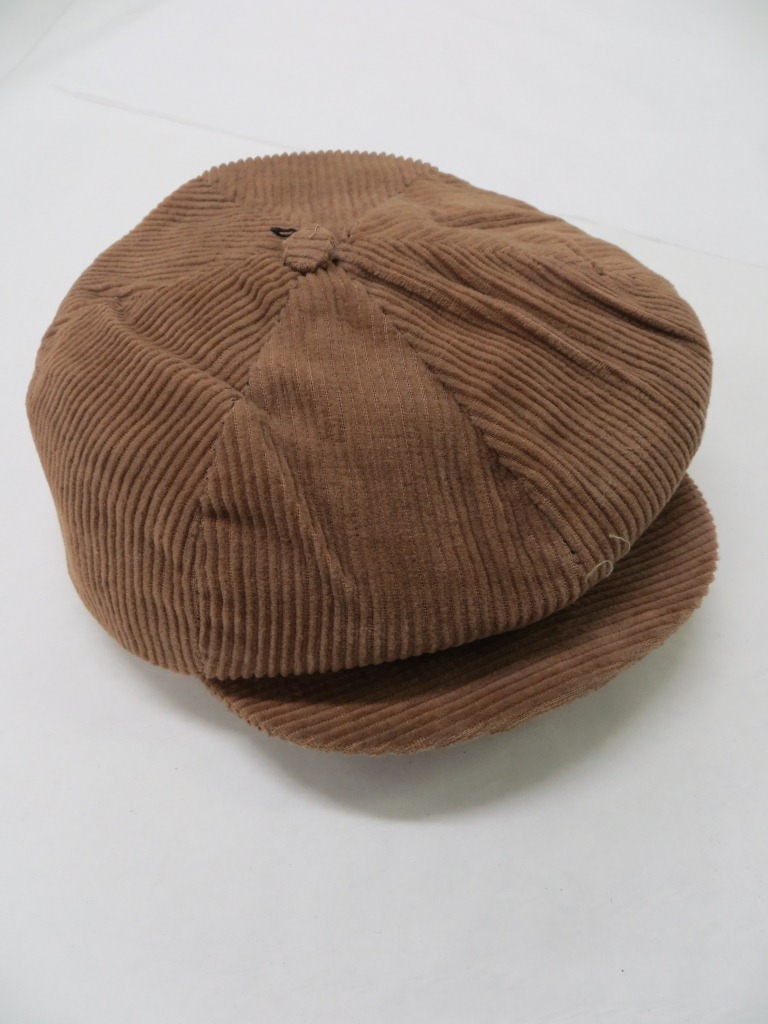
Our photographic inventory proved an entertaining and insightful experience, revealing robust, functional, expressive clothing. We would now like to hear from anyone who once wore similar clothing, or may have photographs and memories of Carnwath and James Main and Sons to share. Please send your anecdotes to: c.hyatt@nms.ac.uk.
One of my personal favourites from the collection is a pair of women’s jersey fleece ‘knickers’, whose practicality is matched by a robust ‘Arkella’ corset.
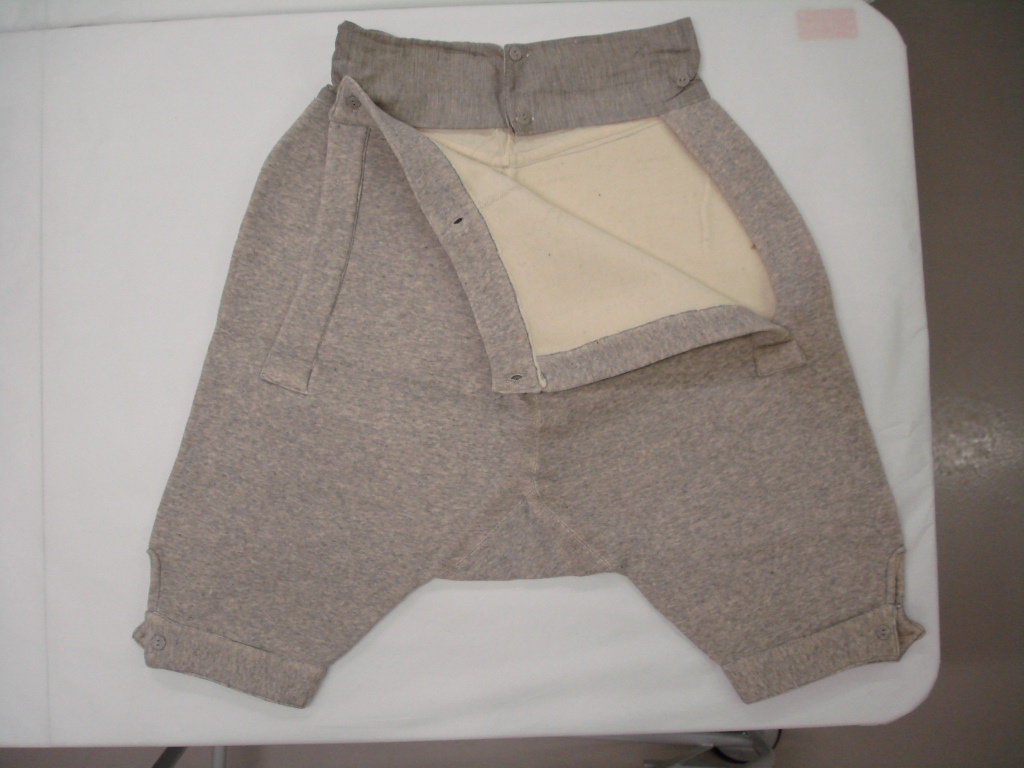
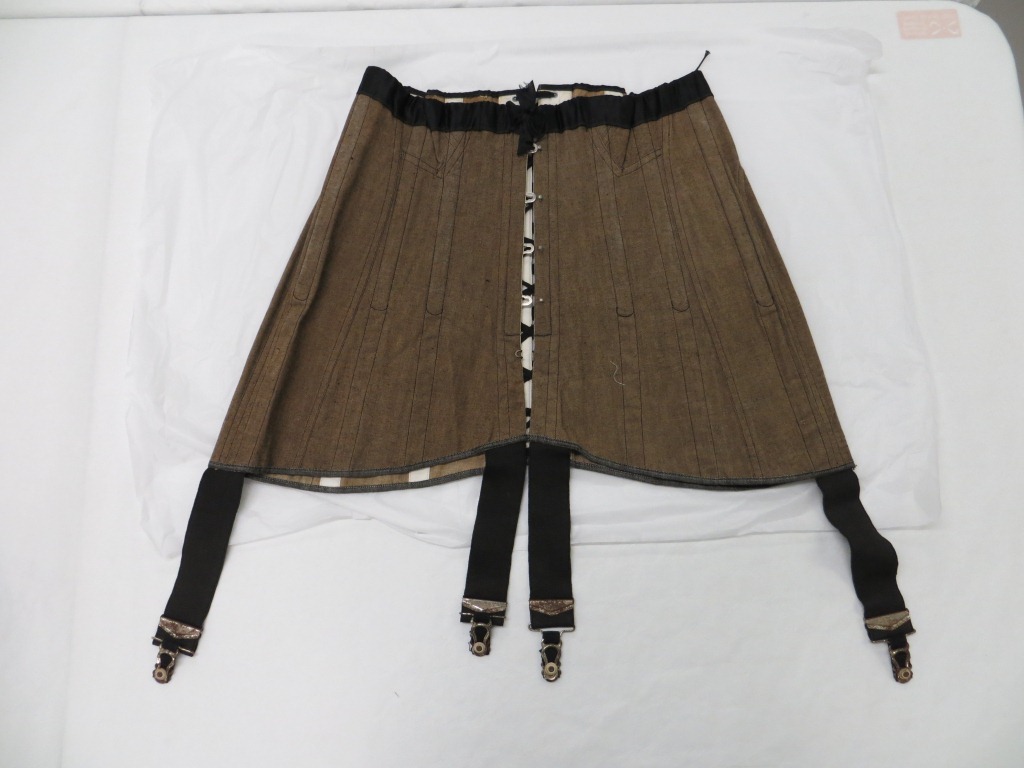
The James Main and Sons collection includes rare examples of maternity skirts from around 1910-1915, tweed suits, dungarees overalls, gentleman’s woollen long johns, housemaid uniforms, a pair of thick pink woollen boy’s underwear and colourful aprons and housecoats.
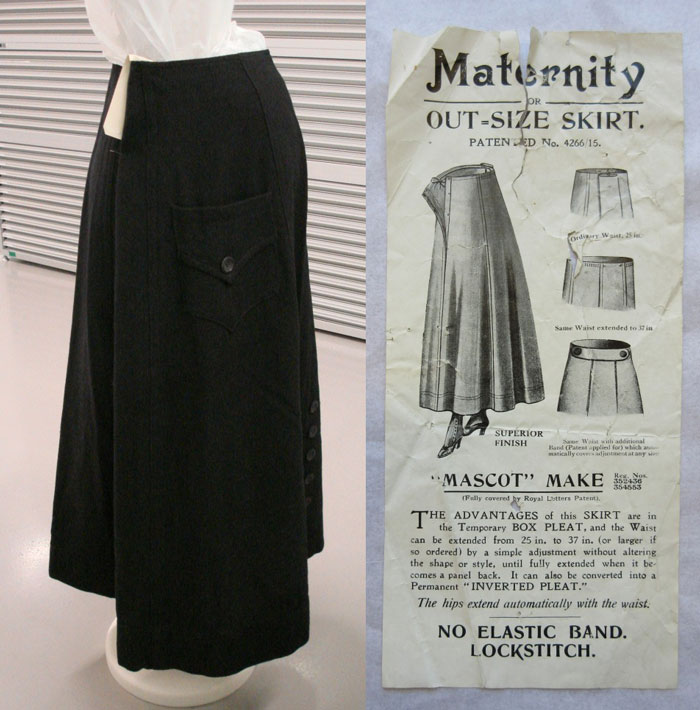
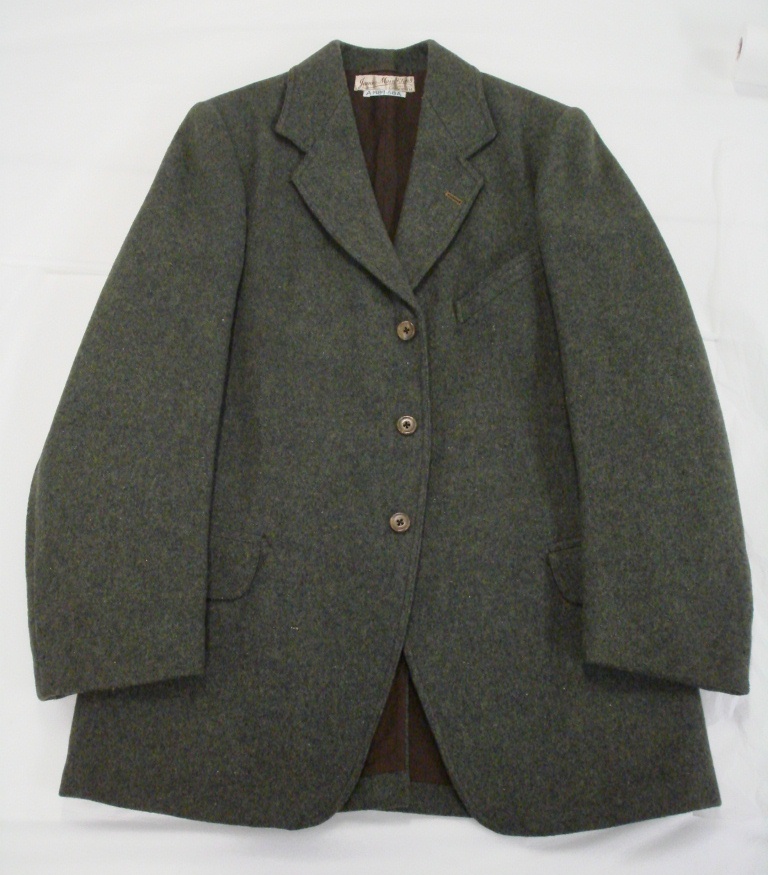
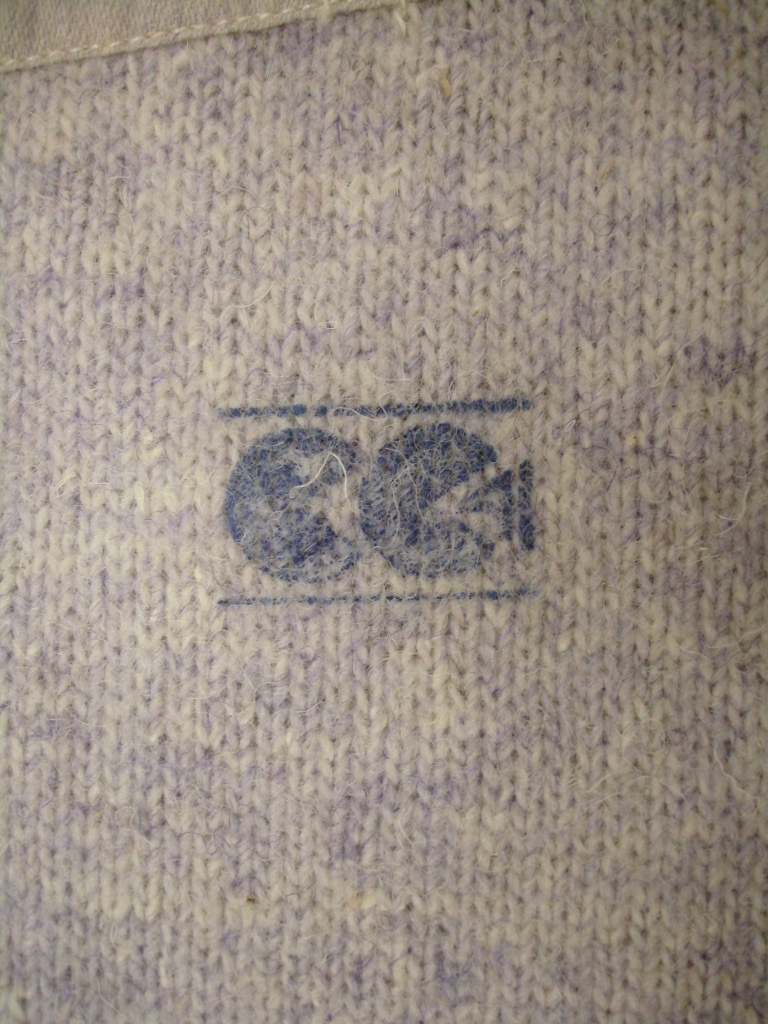
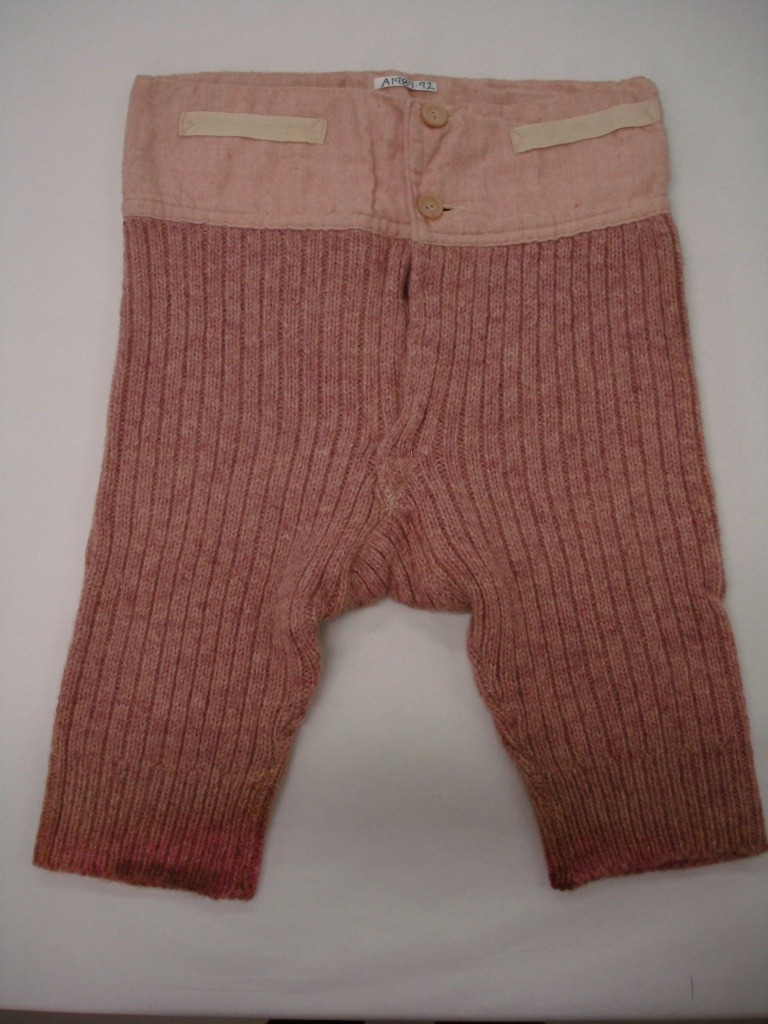
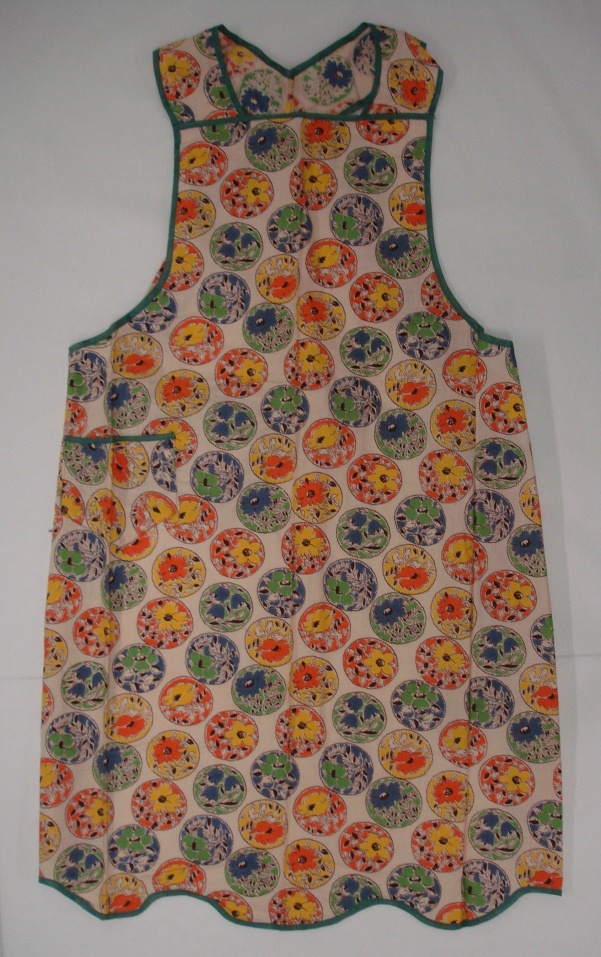
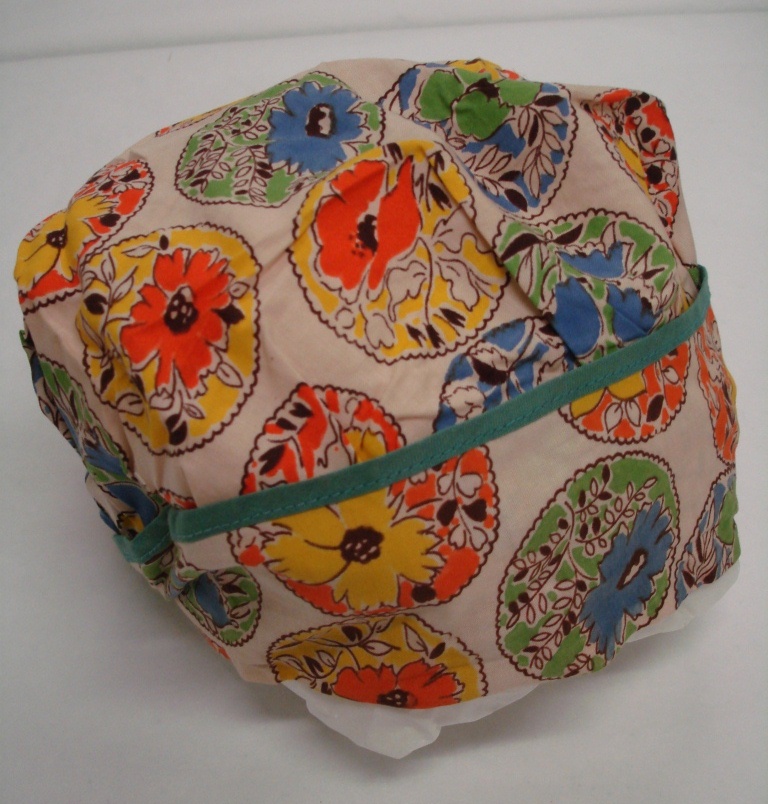
The items vary in their standard of making, sometimes with wobbly machine stitching, or fastenings loosely tacked on, but the materials are often thick, warm and durable. What are your experiences of rural working dress? Did they pinch, itch, keep you warm? Do you remember James Main and Sons? Please get in touch.
